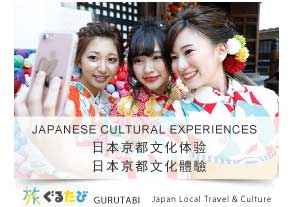10 Things to Eat in Kyoto: Kaiseki, Yudofu, Obanzai & More
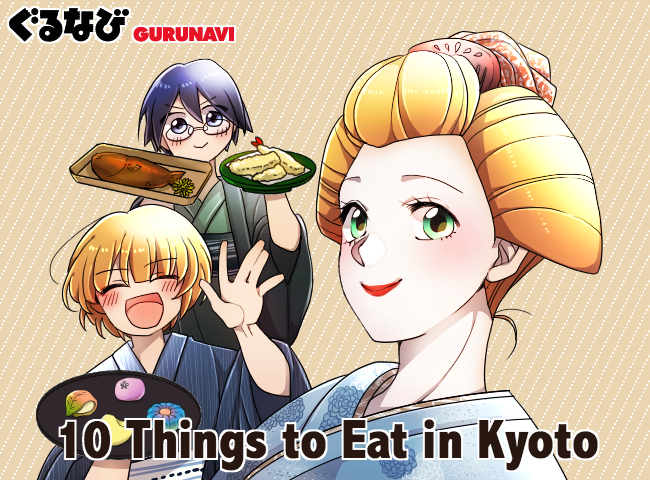
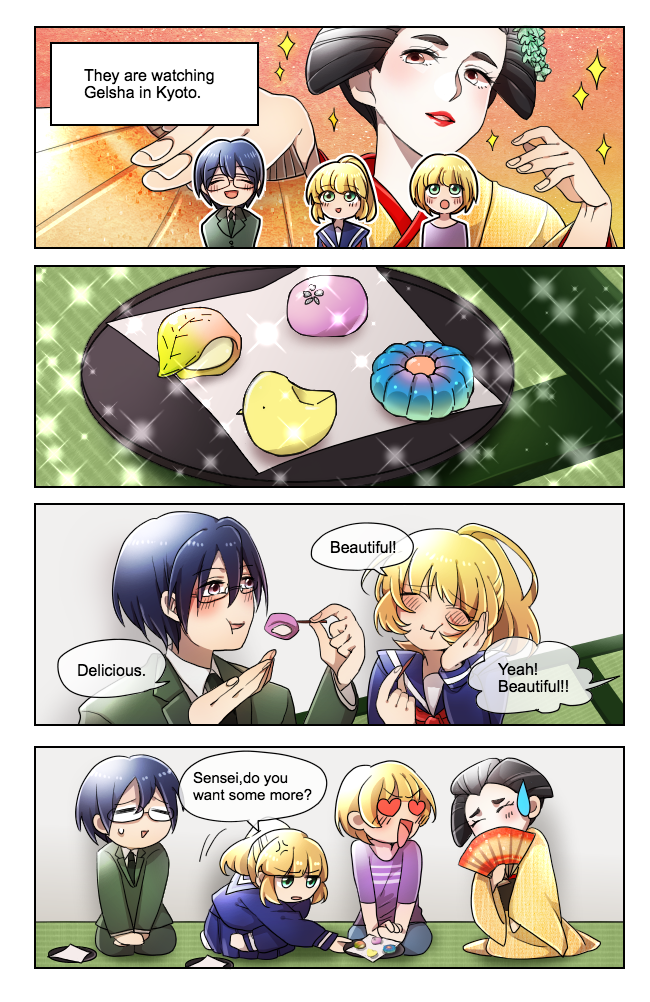
The captivating city of Kyoto is known for its incredible scenery and historical landmarks, with over 1,500 temples and shrines, including several UNESCO world heritage sites. Kyoto is surrounded by mountains, making its winters very cold and summers very hot. Many rivers, both large and small, flow through the region, the most prominent of which is the Kamo River. The nature of the region and its four distinct seasons heavily influence its structure and the things it creates. From the spring cherry blossoms to the autumn foliage, Kyoto is a gorgeous and inviting city at any time of year and frequently tops lists for the number one travel destination in the world. In addition to its traditional buildings and culture, Kyoto has a rich culinary history, with a number of famous dining styles, local dishes and confectionaries.
Kyoto Food Is as Diverse and Majestic as the Town Itself
Kaiseki
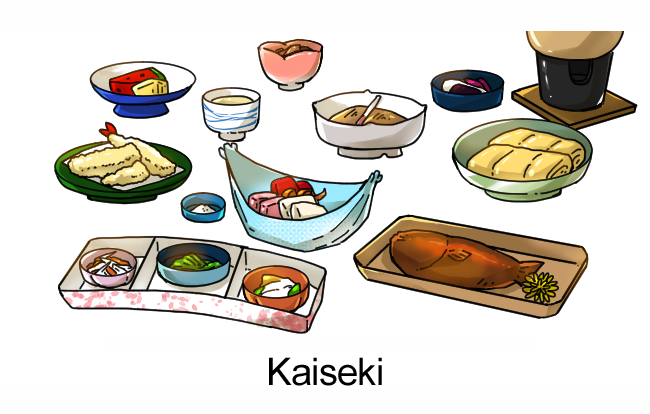
Kaiseki is Japan’s traditional haute cuisine, where every item is prepared with painstaking care and presented in simple but elegant arrangements. What started as small bites of food meant to be enjoyed during formal tea ceremonies with matcha tea (“cha-seki”), over the centuries has transformed into a full-blown tasting course of seasonal dishes. The ingredients used are selected at the height of their freshness and represent the color and flavors for that time of year. Kaiseki can get a bit pricey, so if you’re on a budget, try a shokado bento or a short kaiseki course called a “mini-kaiseki." The bento is served in a jubako, or a square lacquered box.
Shojin Ryori

Shojin-ryori is the traditional vegetarian cuisine eaten by monks in Kyoto, who were forbidden from eating fish, meat, and strong flavors such as garlic and onion, due to Buddhist tradition. The main ingredients used in shojin-ryori include a number of soybean-based foods such as tofu, koya-dofu (dried tofu), and natto (fermented soybeans). These are paired with seasonal vegetables meant to restore the body and provide nutritional balance according to the seasons. The best place to try shojin-ryori in Kyoto is at the restaurants found in Buddhist temples.
Yuba

Yuba is a delicacy that arrived to Japan via China over 1,000 years ago. Made from the skin that forms at the top of soy milk as it is heated, yuba has a light soybean flavor and a soft, wrinkled texture when fresh. It’s often eaten with soy sauce and some freshly grated wasabi or with ponzu (a citrus-flavored soy sauce dressing). When dried, yuba has a chewy texture and can be fried, boiled, or served in soup. Dried yuba can be eaten wrapped around other ingredients and deep-fried. The uniqueness and rarity of yuba makes it one of the best foods in Kyoto, and one not to miss!
Yudofu
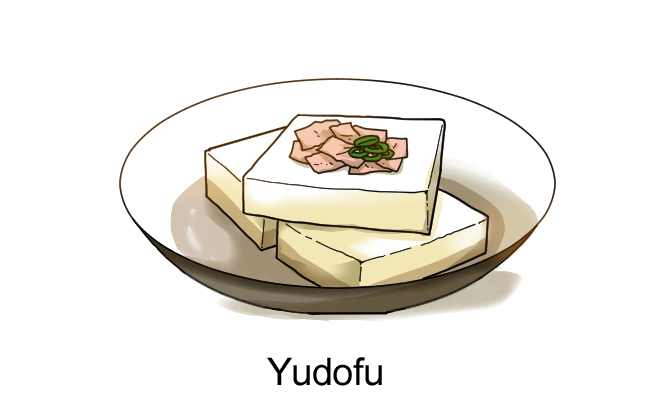
The simple but elegant dish contains only three ingredients—water, kombu seaweed for flavoring, and silken tofu. Yudofu is an incredibly simple dish that highlights the superior quality of Kyoto-made tofu, which is renowned for its smooth, creamy texture and fresh, clean flavor. Given the simplicity of the ingredients, every item used must be of the finest quality for the dish to be full-flavored without the use of heavy seasoning. To make this classic Kyoto food, ingredients are simmered together in a heavy hot pot dish, and the hot tofu is then served with a light soy sauce-based dipping sauce alongside condiments such as freshly sliced scallions, momiji oroshi (grated daikon and chili pepper), yuzu (a kind of citrus fruit), and ground sesame seeds.
Yatsuhashi Senbei

Yatsuhashi senbei are a traditional sweet that were first made to commemorate a famous Japanese koto player from the 17th century named Kengyo Yatsuhashi. After his death, these rice crackers were sold neared Shogoin temple, so they’re also known by the name “Shogoin Yatsuhashi”. Yatsuhashi senbei are made by pounding rice into a thin cracker shaped like a koto instrument, which is then toasted on a hot plate and flavored with a bit of cinnamon and sugar. These are a famous traditional souvenir to bring back to friends, family, and coworkers and one of the best foods in Kyoto.
Nama Yatsuhashi
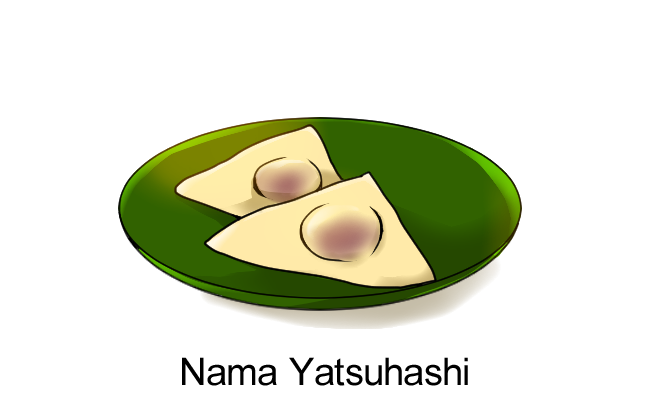
Nama yatsuhashi is a modern unbaked version of the yatsuhashi sweet that has been sold since the 1960s, and is one of the most interesting things to eat in Kyoto. Rice flour dough is kneaded with cinnamon sugar and rolled out flat, then cut into small squares. Each square is dusted with a sweet toasted soybean flour called kinako, covered with a small dollop of sweetened adzuki red bean paste, and then folded over into a triangle for a distinctive shape. The filling or flavor of the rice flour dough may vary, inducing cinnamon and red bean, matcha, black sesame, chocolate, strawberry, peach, and other flavors. These triangle-shaped sweets are another famous Kyoto food souvenir.
Kyo-Gashi
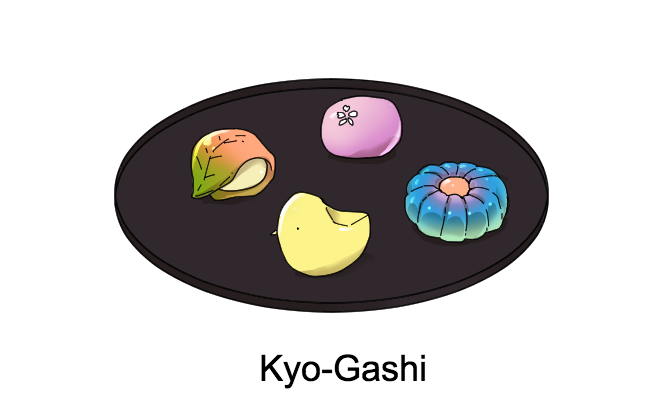
Kyo-gashi are the traditional Japanese sweets that were made for the Imperial family and nobility in Kyoto to enjoy with their tea. While Japanese sweets called wagashi are enjoyed throughout the country, those from Kyoto were crafted with an extra level of artistry into elaborate shapes such as flowers, leaves, and more. Each of the sweets are named after a line from traditional Japanese poetry, which is then incorporated into the shape and flavor of the confectionary. As a result, Kyo-gashi are said to be enjoyed with the eyes, mouth, and ears.
Obanzai
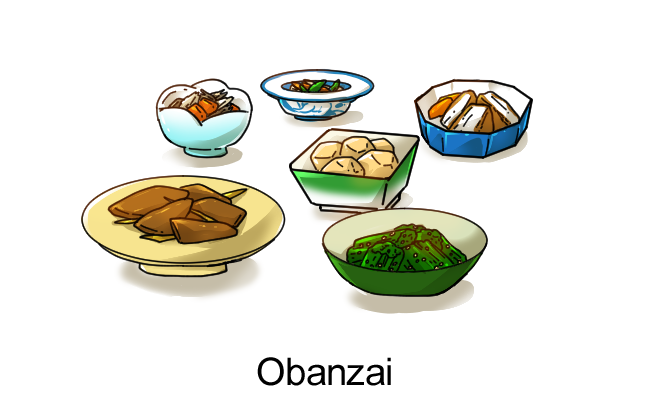
Obanzai is traditional Kyoto-style home cooking or comfort food that’s made with fresh Kyoto-grown vegetables and pickles. Because of the emphasis on local ingredients, the dishes served for obanzai vary by season and availability. All of the dishes are simply made, but a skilled chef can draw out the incredible flavors of the vegetables with just simple seasonings.
Senmaizuke
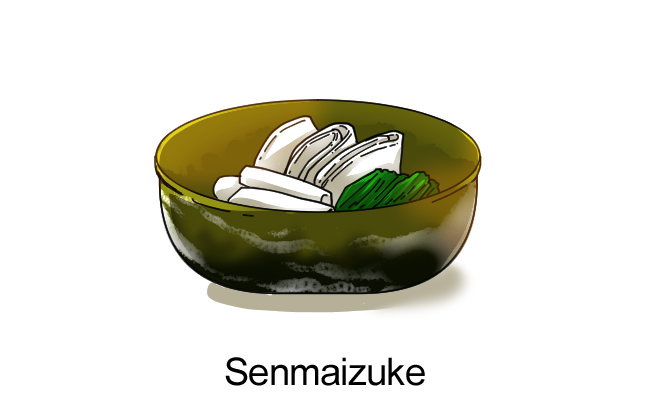
Pickled vegetables, or tsukemono, have been enjoyed in Japan since ancient times, and senmaizuke is one of the three main types of traditional pickles made in Kyoto. Senmaizuke are made with Kyoto’s local Shogoin turnip, a white turnip root of around 4 inches in diameter that’s harvested during the wintertime. The white turnip root is very thinly sliced, giving the dish its name meaning “thousand slice pickles”, and seasoned with vinegar and kelp. Red pepper can also be added for a bit of spice.
Uji Matcha

One of the most famous food items from Kyoto is matcha, a type of premium green tea that is finely ground into powder. It has been used for traditional tea ceremonies since the 12th century, when it was introduced to Japan by Buddhist monks via China. The finest matcha in Japan is produced in the city of Uji, located in Kyoto prefecture to the south of Kyoto city, where the land and climate are perfect for growing tea. Today, Uji matcha is used not only for tea ceremonies but also for everyday beverage consumption in tea lattes, as well as an ingredient in cooking and baking. Some popular examples of matcha desserts include matcha ice cream parfait, matcha yatsuhashi, and other matcha-flavored sweets.
A History of Kyoto and its Four Distinct Seasons
Kyoto was made the capital of Japan in 794. The streets in central Kyoto were laid out in a grid-like pattern, a layout that supposedly was borrowed from the city of Chang'an, the capital of China at the time. Kyoto was the cultural center of Japan for 1000 years before the capital was moved to Tokyo. Surrounded by nature, Kyoto has given birth to countless cultural phenomenon, and also survived numerous wars and rebellions. In Kyoto cuisine, the subtle, natural flavors and aromas of ingredients are very important, so extra seasonings are kept at a minimum. Sweet white miso paste is also used instead of normal miso.
The Four Seasons of Kyoto
Japanese people, especially those living in Kyoto, take pride in how distinct each and every season is, and that pride is reflected in the dishes they make.
Spring: Hanami, the custom of viewing and appreciating sakura, or cherry blossoms, is very important in Japan. Crowds of people gather to have picnics and attend festivals underneath the cherry blossom trees, enjoying the transience of the beauty of spring. Kyoto boasts a number of excellent sakura viewing spots within the walls of its many temples and shrines, as well as elsewhere throughout the city.
Summer: Kyoto summers are hot and humid, so many people find them difficult to tolerate. Kyoto offers numerous unique methods to beat the heat. One of these is the noryo-yuka or kawadoko, where restaurants set up seating next to, or even on top of, a river. The water evaporating from the river cools off the surrounding area and makes for a refreshing summer dining experience. The most famous festival in Kyoto, the Gion Matsuri, spans the entire month of July.
Autumn: Autumn is the most popular season for tourists in Kyoto. The mountain landscapes and temple grounds are awash in autumnal reds, yellows, and oranges as the leaves change and show Kyoto at its best. Seasonal food will often reflect these colors and feature momiji leaves, or Japanese maple leaves, as garnish.
Winter: Tourists are relatively few in number come winter, which means it’s a good time for relaxed sightseeing. Kyoto underneath a blanket of snow is a sight to behold. What better way to spend the winter than gazing at the snowy Kyoto landscape over a hot tofu stew?
Be Sure to Try the Best Food in Kyoto When You Visit Japan’s Ancient Capital
With its gorgeous scenery, famous landmarks, and so many incredible delicious things to eat in Kyoto, it’s no surprise that the city has been voted a number one travel destination by people around the world. Why not start planning your next trip to Kyoto, and be sure to try all of Kyoto and Kansai region’s famous specialty foods. You can get a complete guide to restaurants in the Kyoto area by visiting Gurunavi’s restaurant pages here. Itadakimasu!




